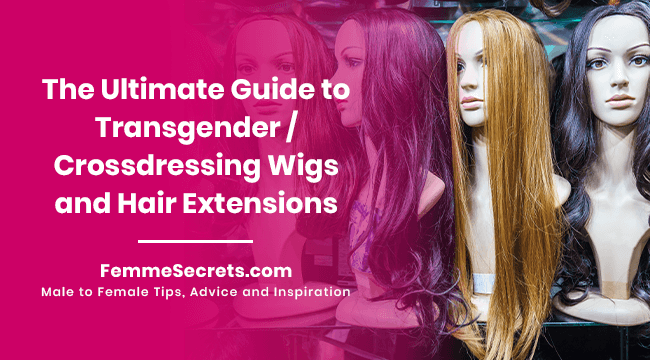
Are wigs and/or hair extensions part of your female wardrobe? If not, they should be!
Even if you’ve grown out your own hair, a wig or hairpiece is a great way to transform your look and add some instant glam.
To help you get started, I created this guide to transgender / crossdressing wigs and hair extensions.
We’ll cover everything you need to know about selecting the perfect hairpiece to complete your MTF transformation or transition.
Human Hair Vs. Synthetic Hair: Which Is Best?
Wigs and hair extensions fall into two basic categories: human hair and synthetic hair. Each has its advantages and disadvantages.
Human hair
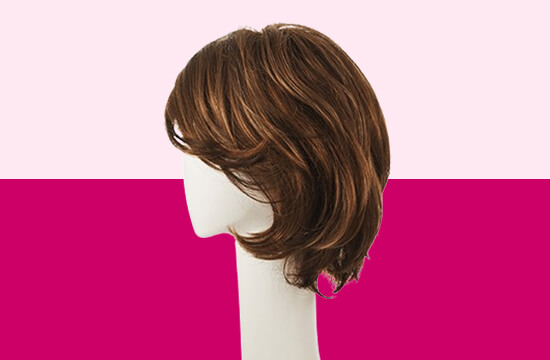
PROS: Not surprisingly, human hair is the most natural-looking option. It’s also the most versatile as it can be cut, styled, permed, or colored just like your own hair.
CONS: The biggest downside to human hair is cost – we’re talking hundreds or even thousands of dollars for a human hair wig or extensions. Human hair is also heavier than synthetic hair and requires more styling.
If you shop for a human hair wig, you are bound to run across certain “buzzwords.” Here’s what they mean:
- Virgin Hair – Virgin hair refers to hair that has never been permed, dyed, or chemically processed in any way.
- Remy Hair – Remy hair means that the hair cuticle has been kept intact as opposed to being stripped in acid. Remy hair is softer and less likely to tangle than non-Remy hair.
- Asian vs. Indian vs. European Hair – This refers to where the hair was sourced, with European hair being the most expensive.
Synthetic hair
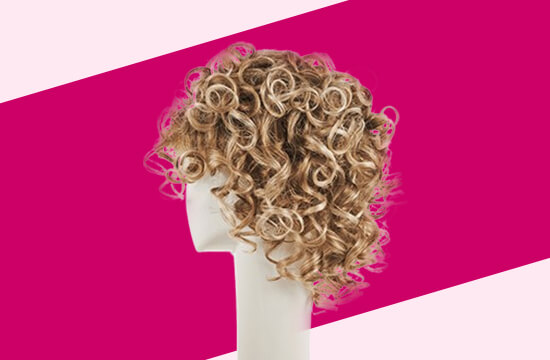
PROS: The biggest advantage of synthetic hair is that it’s less expensive than human hair. It’s also lighter and come pre-styled, which makes it easier to use. Best of all, high quality synthetic hair can be virtually undetectable from human hair.
CONS: A major con is that you can’t heat-style most synthetic hair, so your style options are limited. Synthetic hair also has a limited lifespan of 3-6 months of daily wear.
Blended hair
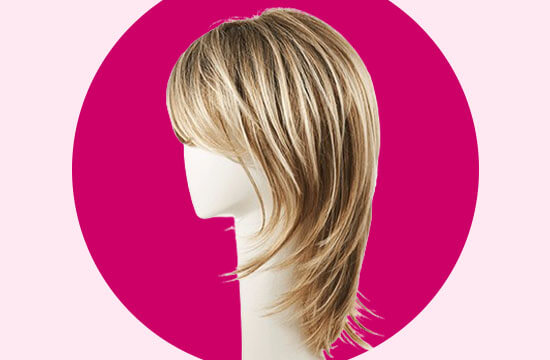
Though not as common, there’s a third option: blended hair. Blended hair contains a blend of human hair and synthetic hair and offers the best of both worlds: It’s less expensive than human hair and looks more natural than synthetic hair. It can also be heat-styled.
How To Pick A Wig
The beauty of wigs is that they open up an entire world of hair options. Always wanted long, blonde hair? Or dreamed of being a sexy redhead? Wigs can make it happen in an instant.
Here are main things to consider when choosing a wig:
Color and style
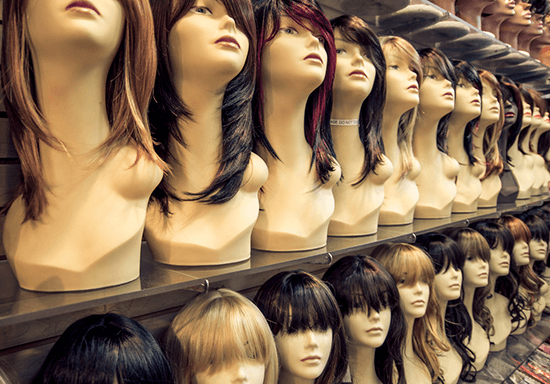
Your wig should flatter your face and features, so the color and style are key. If possible, I recommend shopping for a wig in person so you can try it on before you buy.
Here are a few color and style tips to keep in mind:
- Stay within 2 shades of your natural color for the most flattering look.
- Wigs with highlights (vs. a solid color) tend to look most natural.
- Shorter wigs are easier to manage and maintain.
- Shoulder length hair is universally flattering for all ages and face types.
For more hairstyle tips, check out my blog post on MTF Transgender Hairstyles: 6 Best Transfem Haircuts & Styles.
Size
Wigs come in 3 basic sizes: petite, average, and large. If you shop for a wig online, you’ll need to know your head size so you can choose the correct size. The video below demonstrates how to find your wig size.
Wig cap construction
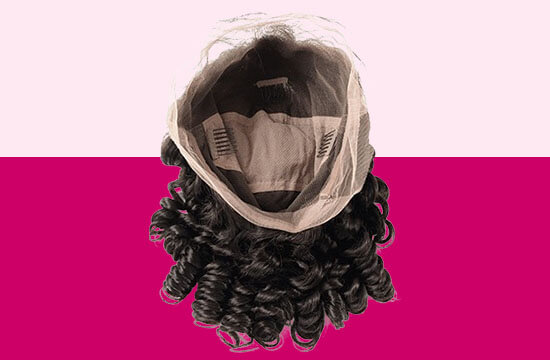
A final consideration is the wig cap. Here are the different wig caps that are available:
- Standard Wig – A standard cap wig has a closed lace crown with the hair machine-sewn to the cap. This is the most common and affordable wig cap style.
- Capless Wig – A capless wig is similar to the standard cap, except that the hair is attached to vertical lace strips instead of closed lace. The open design makes the wig lighter and cooler than a standard cap.
- Monofilament Wig – Monofilament wigs are made with thin nylon or polyester mesh material at the crown to create the illusion of a scalp. This looks more natural since the hair can be parted or styled in any direction.
- Lace Wig – Lace wigs are made with a fine lace mesh that is custom fitted, trimmed, and glued (or taped) to the skin around the hairline. This creates a lifelike hairline, even with the hair pulled back.
Hairpieces: What You Need to Know
Hairpieces are designed to blend in with your own natural hair. They are a great way to transform your look without the hassle of wearing a full wig. Here are the most common hairpieces:
Half wig
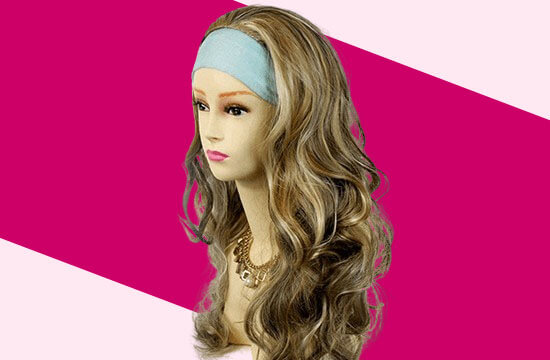
A half wig (also known as a fall or 3/4 hairpiece) is worn away from the hairline and covers the crown, sides, and back of the head. The half wig is either attached to the head with clips or worn with the hair pre-attached to a headband.
Wiglets

Wiglets are a great option for girls with thinning hair or receding hairlines. Wiglets have a small base that is attached to the front or top of the head, adding volume where you need it. The advantage is that they disguise hair loss, but are lighter than a full wig.
Ponytail hairpiece
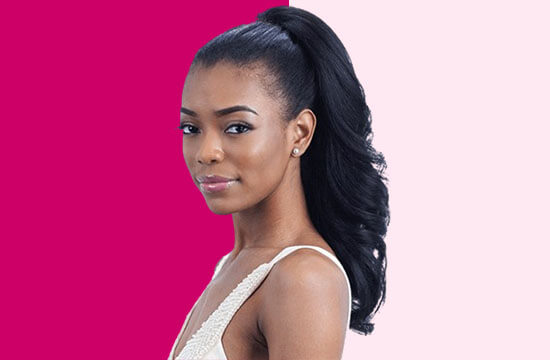
Looking for an easy updo? Try a ponytail hairpiece. Ponytail hairpieces are attached via a jaw clip, interlocking combs, or an elastic string. (Note: To wear a ponytail hairpiece, your hair has to be long enough to pull back.)
Clip-in bangs
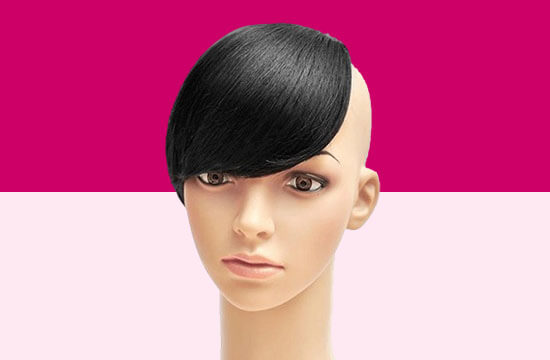
Clip-on bangs are a fast way to add some sass to your style. Just clip them onto the front of your hair and voila! Instant bangs.
What About Hair Extensions?
All those Hollywood stars with impossibly long, gorgeous hair? Chances are, their secret is hair extensions.
Hair extensions add length and fullness to your hair – but keep in mind that your hair has to be thick enough to hide the base of the hair extensions. Hair extensions don’t work well with thinning hair or a receding hairline. (You’re better off with a full wig or a wiglet in that case.)
Here are the most common types of hair extensions:
Clip-in hair extensions
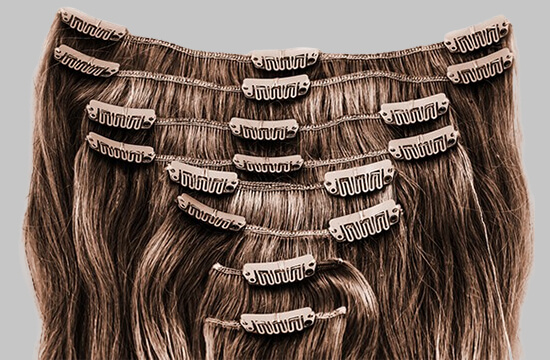
Clip-in hair extensions are fast, fun, and easy. The extensions are attached with clips and can be worn for a special event and then easily removed.
Bonded hair extensions
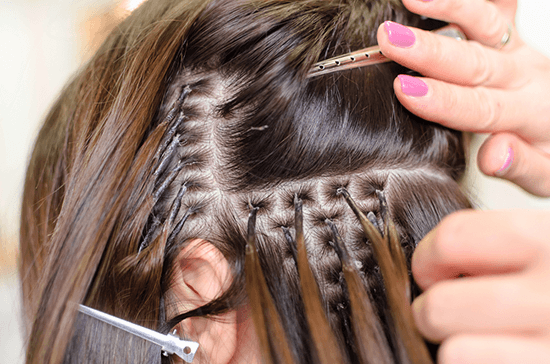
If you are looking for more permanent extensions, bonded hair extensions are the most popular option. Bonded hair extensions are attached with a special type of glue and last 3-6 weeks before needing to be reattached.
In theory, bonded hair extensions are not supposed to damage your hair. However, I’ve spoken with lots of women who claim that bonded extensions DID damage their hair. Bonded hair extensions are also expensive, typically ranging from $500-$2000.
Sewn-in hair extensions
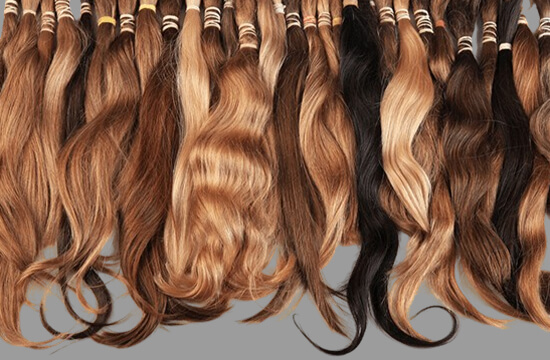
With sewn-in extensions, your hair is first braided in tracks around your head and then the extensions are sewn to the braided tracks.
Sewn-in extensions also range from around $500-$2,000, but they last longer than bonded hair extensions. The disadvantage is that they can feel very tight and painful when first applied and can also damage the hair.
Where to Buy a Wig, Hairpiece, or Hair Extensions?
Now that you know what your options are, where can you buy a fabulous new wig, hairpiece or extensions?
In person
Buying a wig or hairpiece in person has several advantages:
- You can try before you buy to see how it looks.
- You can receive professional advice and guidance.
- You can inspect the quality before purchasing.
If you have access to a beauty supply store or wig shop, I definitely recommend stopping in – even just to browse and become more familiar with these items.
Online
Prefer the privacy and convenience of buying online? Here are a few trusted resources for wigs, hairpieces, and hair extensions:
- Wigs.com – The largest online wig store
- PaulaYoung.com – Wigs for older women
- Wigs Boutique – The UK’s favourite wigs and hairpieces retailer
- Luxy Hair – Clip in hair extensions
- Ebay – A good source for low cost wigs (Just be sure to check the seller’s return policy!)
Now Let’s Hear from You!
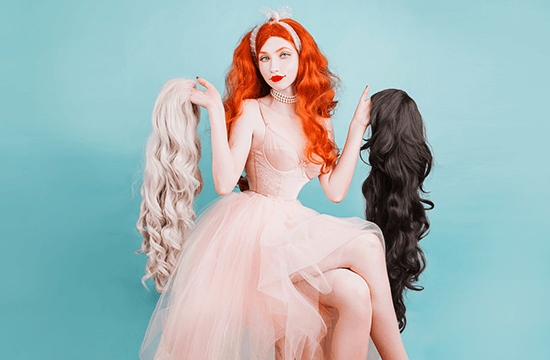
As you can see, the options for achieving full, feminine hair are almost endless!
Now I’d like to hear from you! Please take my poll and share your experience with wigs, hairpieces, and/or hair extensions. What worked for you and what didn’t? I’d also love to hear any extra tips you might have – as well as specific product recommendations.
Love,
Lucille

P.S. After you’ve mastered your hair, the next step is makeup! Get started now with my FREE Male to Female Makeup Mini Course.
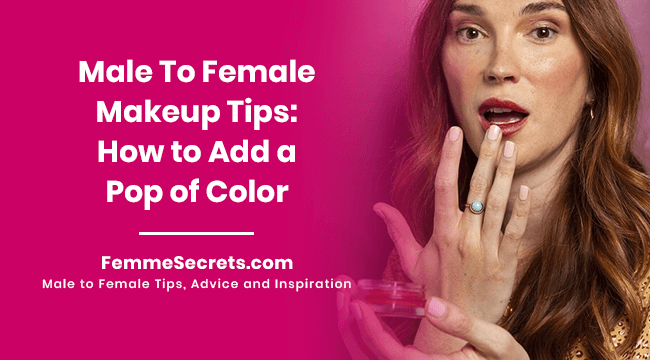
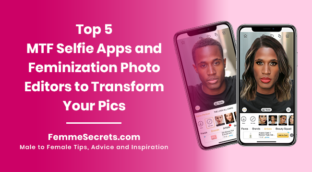

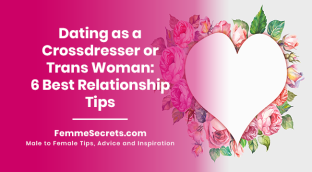

I am also passionate about learning new hairstyles and extension techniques like ponytail, sew in, and weft to ensure better customer satisfaction.
Hi I currently wear two wigs one daily everyday also one for going out
I am completely bald so my only option is a wig. On some occasions I have gone without and i think it looks awesome but for the most part i will do a natural wig. The texture all depends on what i am doing.
I wear a wide variety of wigs
avec ma perruque, maquillée comment me trouver vous .
bisou lysa
I have three wigs of the same coloring that are short hair and one Red wig that is shoulder length. I enjoy wearing them all. However since I have grown my own hair out to should length I would like to find a solution to cover the top of my head where my hair is missing. There are times that I would love to go natural but I an bald on top. I live in the Rochester NY area and haven’t been able to reasonable solution.
Love your tips and support
Jennifer
I keep thinking of looking into wigz, but have so much inertia that it has not happened. My thinning hair is within the bounds of credibility for an old gal (keep thinking I look like mother did), so there’s less pressure. I wore some obvious costume wigs at times just for effect, and it was fun! There is at least one good resource to consult here, so it’s possible someday….
Sadly, I do not currently wear wigs. And the only wig I ever owned was terrible. I learned the hard way that you absolutely should not purchase wigs online. Unless you are purchasing a costume/starter wig. Otherwise, going to a local shop is a must. There is simply no substitute for professional measurement, fitting and color/style advice. This is true for everyone purchasing any product that is meant to be worn on your body. If you want a good product that actually fits You, then you need a real professional that specializes in the product you are interested in and preferably caters to Trans-women. Yes, you CAN measure yourself. However, that does NOT mean you should. Most self-measurements are wrong. My plan is to find trans friendly shops in my area and get all my measurements/fittings done by professionals.